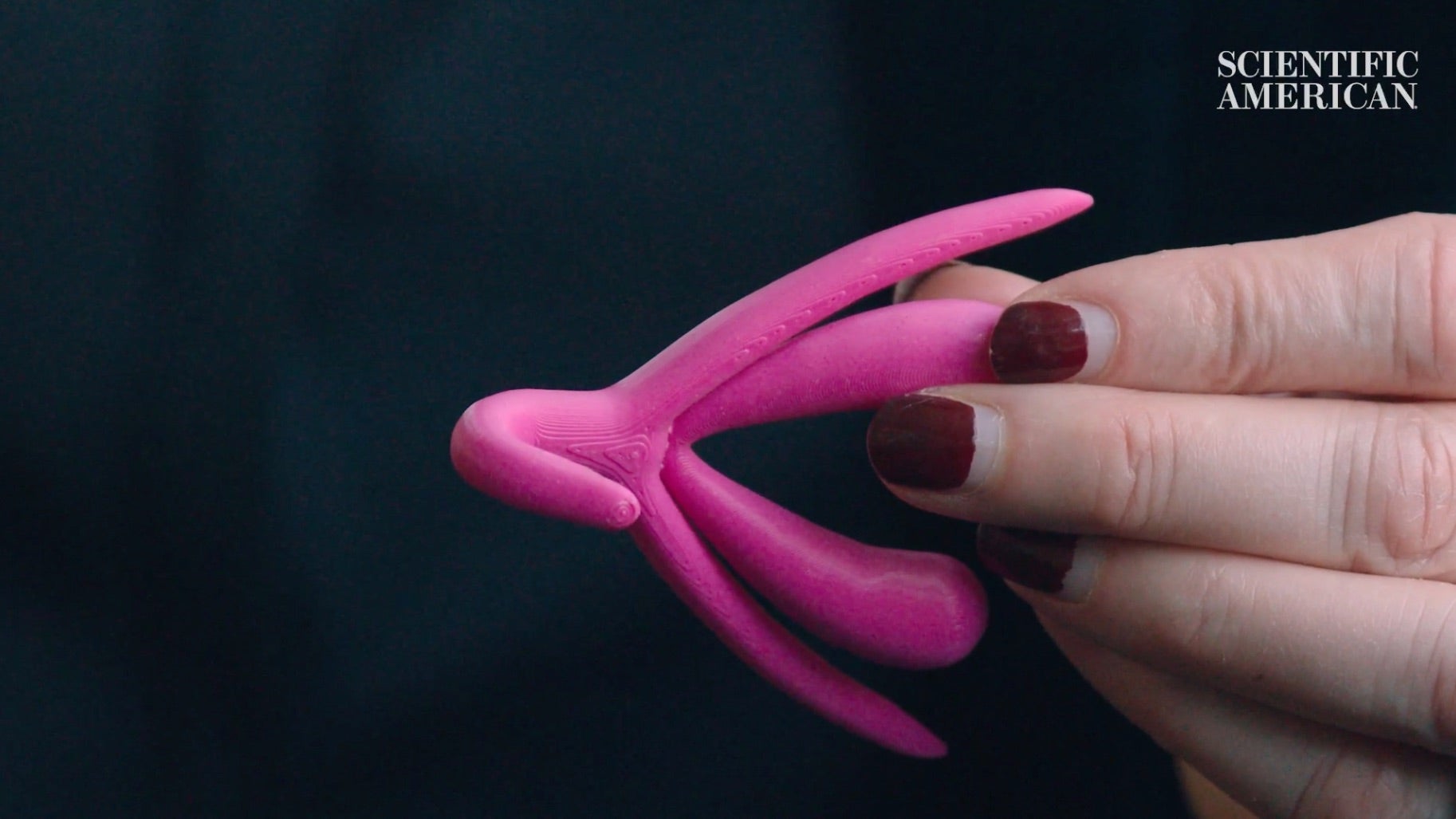
In October researchers at the Oregon Health & Science University announced that they approximated the number of nerve fibers in the human clitoris that are responsible for sexual pleasure—more than 10,000—for the first time ever. In comparison with the penis, which has been studied extensively, the vulva has been largely ignored in anatomical study.
“I mean, like, the general story of the clitoris is that it appears to have been lost and found throughout history,” says Rachel E. Gross, a science journalist and author of Vagina Obscura, a book that explores how science has long viewed the female body with a narrow focus on reproduction and how that’s changing.
It was only about 20 years ago that urologist Helen O’Connell comprehensively mapped the clitoris for the first time using microdissection and magnetic resonance imaging, proving that what we see above the surface is just a small part of the entire structure below.
Clitoral anatomy is still making its way into medical textbooks, in part through the advocacy of one woman named Jessica Pin, who lost clitoral sensation after undergoing plastic surgery on her labia in 2004.
“I realized that surgeons were doing surgeries they were never trained to do on anatomy they were never taught,” Pin wrote in an email. “The dorsal nerves of the clitoris were omitted from every anatomy textbook I could find. They were omitted from every OB/GYN textbook I could find. They were nowhere described in plastic surgery or OB/GYN literature. They were nowhere considered in literature on female genital cosmetic surgery. Surgeons were operating blind to nerves.”
Pin considers what she went through a form of “preventable genital mutilation,” caused by “carelessness and taboo around female sexuality.”
As late as the mid-20th century, clitoridectomies, or the removals or reductions of the clitoris, were overtly practiced in the U.S. and U.K. to prevent masturbation. And in the mid-19th century, such surgeries were performed as a “cure” for “hysteria” and attitudes such as a “distaste for marital intercourse” and “a great distaste for her husband.” According to an estimate by UNICEF, today at least 200 million girls and women in 31 countries have been subjected to genital cutting, otherwise known as female genital mutilation, or FGM.
In California, Marci Bowers, a gynecologist focused primarily on gender-affirming surgery, performs clitoral reconstruction procedures for survivors. While genital cutting has been shown to cause severe pain, bleeding, infections, urinary problems and childbirth complications, very little research has investigated its impact on sexual function and solutions.
“When you think that this affects 200 million women worldwide, it’s an embarrassingly small amount of attention,” Bowers says. “It was really interesting when I began interviewing patients who had undergone FGM, and their primary motivation for getting the surgery was not sex or sexual feeling even; it was the sense that their identity had been taken from them.”
In the fifth and final episode of Scientific American’s documentary series A Question of Sex, we meet Bowers and one of her patients to understand what it means for science to prioritize female pleasure.
